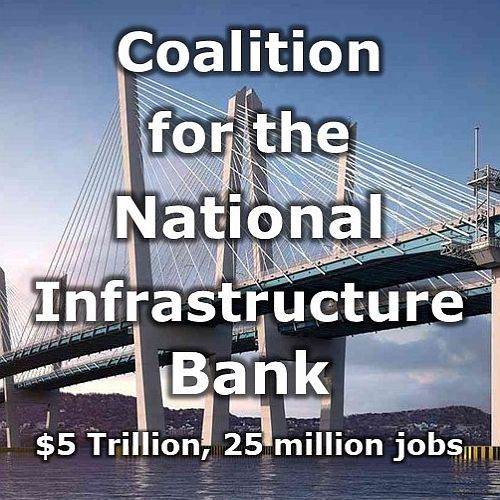Biden Infrastructure Plan Still needs a Large Public Bank to Complement It
Last Updated June 27, 2021
In the final weeks of June, 2021, the Biden Administration has negotiated with a Bi-partisan group of Senators on the terms of a package to provide $973 billion for infrastructure projects over five years ($579 billion in new spending, plus $394 in re-authorization of existing spending). Finalizing the Bi-Partisan Plan (BPP) will still depend on reaching agreement on how to pay for it, as well as on the terms of a second, companion package – The American Family Plan – moving through Congress under reconciliation rules.
Even if approved, the BPP will not be enough to cover the full infrastructure financing gap identified by the American Society of Civil Engineers (ASCE, see Table 1 below). ASCE estimates that $2.6 trillion is needed over 10 years, far greater than the $579 billion of new money over five years suggested under the BPP. Nothing is allocated under the BPP to cover high speed rail, schools, dams and levees, public parks, affordable housing, or new water delivery projects for drought stricken areas in the U.S. And the amount assigned to water infrastructure is a fraction of what is needed, according to ASCE.
A fully funded, public, National Infrastructure Bank (NIB), as set out in HR 3339, would finance up to $5 trillion to cover all of the infrastructure projects listed above, in every single jurisdiction in the country. Passage of the Bill would guarantee complete funding over a ten-year period, without the need to re-negotiate again in 5 years or beyond. Moreover, the NIB would pay its own way, offer low-cost loans, mobilize for economic growth and development, all without adding to Federal taxes or deficits.
This NIB is the best option to fully complement the Administration’s proposed infrastructure plan.

